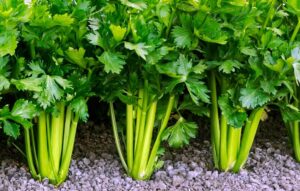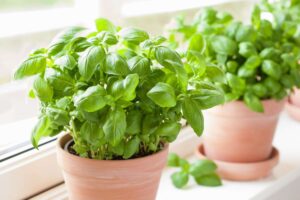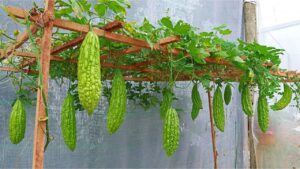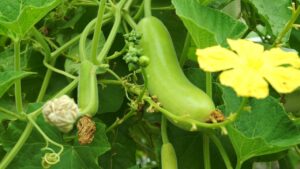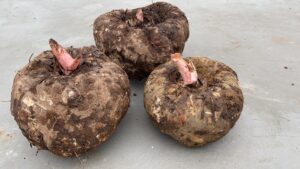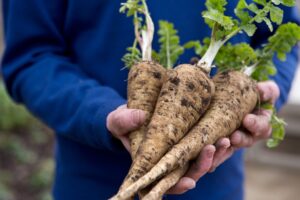How to Grow Tabasco Peppers: A Complete Guide
Tabasco peppers (Capsicum frutescens) are prized for their distinctive flavor and heat that brings life to countless dishes and, of course, the famous hot sauce that bears their name. Whether you’re a gardening enthusiast or a culinary aficionado looking to grow your own peppers, this comprehensive guide will walk you through everything you need to know about growing tabasco peppers in your garden, in pots, or even indoors.
Understanding Tabasco Peppers
Native to Mexico and parts of Central America, tabasco peppers have become a staple in southern US cuisine, particularly in Louisiana where the McIlhenny Company has been producing the iconic Tabasco sauce since 1868. These small, pointed peppers start green, turn yellow, and finally ripen to a vibrant red. They pack significant heat, measuring between 30,000 to 50,000 Scoville Heat Units (SHUs), making them considerably hotter than jalapeños.
The US market for specialty hot peppers, including tabasco, has grown significantly in recent years. According to the USDA, specialty pepper production has increased by approximately 7.5% annually since 2018, with tabasco peppers representing an important segment of this market due to their unique flavor profile and versatility.
Getting Started: Choosing Your Growing Method
Before diving into the specifics, you’ll need to choose which growing method works best for your situation. Tabasco peppers can be grown:
- In-ground in a garden bed
- In containers or pots
- Indoors year-round
Your climate, available space, and gardening experience will help determine the best option for you. According to the USDA Plant Hardiness Zone Map, tabasco peppers grow best outdoors in zones 8-11, but container and indoor growing expand possibilities for gardeners in cooler regions.
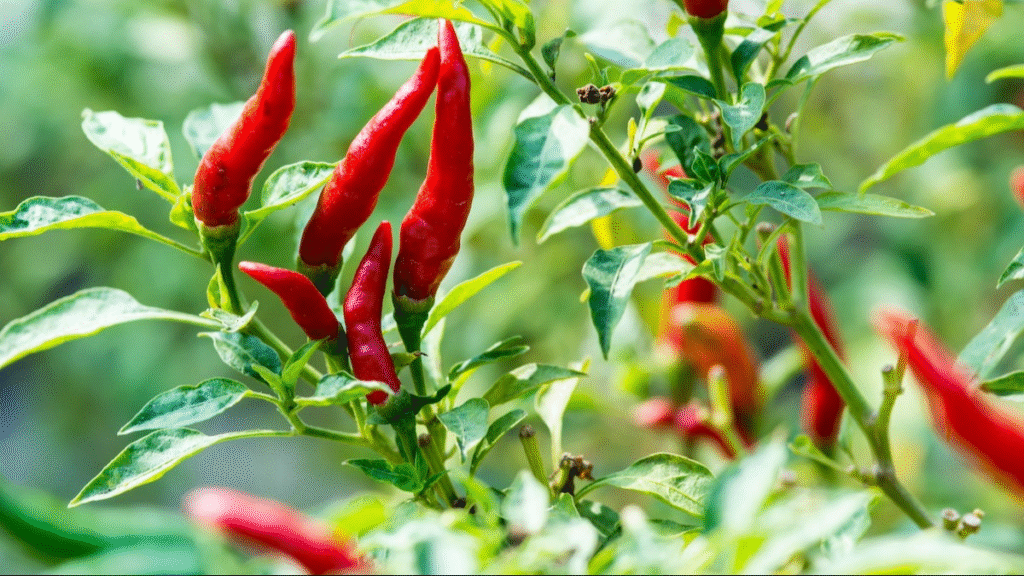
Essential Growing Conditions for Tabasco Peppers
Regardless of your chosen growing method, tabasco peppers have specific requirements for optimal growth:
| Requirement | Optimal Conditions | Notes |
|---|---|---|
| Temperature | 70-85°F (21-29°C) | Minimum soil temperature for germination: 65°F (18°C) |
| Sunlight | 6-8 hours of direct sunlight daily | South or west-facing location ideal |
| Soil pH | 6.0-6.8 | Slightly acidic soil preferred |
| Watering | Consistent moisture, allow top inch to dry between waterings | Susceptible to both overwatering and drought |
| Spacing | 18-24 inches between plants | Smaller spacing (12-18″) possible in containers |
| Days to Maturity | 80-120 days | Varies by climate conditions |
Starting Tabasco Peppers from Seed
Growing from seed gives you the widest variety options and can be more economical. Here’s how to ensure success:
Seed Starting Timeline
For most of the US, start your seeds indoors 8-10 weeks before your region’s last expected frost date. The USDA provides detailed frost date information through their Agricultural Research Service.
Step-by-Step Seed Starting Process
- Prepare your containers: Use seed-starting trays or small pots with drainage holes filled with sterile seed-starting mix.
- Sow the seeds: Plant seeds ¼ inch deep, placing 2-3 seeds per cell or small pot.
- Provide warmth: Tabasco pepper seeds germinate best at temperatures between 70-85°F (21-29°C). Consider using a seed-heating mat to maintain consistent temperature.
- Ensure adequate moisture: Keep the soil consistently moist but not waterlogged. Cover trays with plastic domes or plastic wrap to maintain humidity until germination.
- Wait for germination: Tabasco pepper seeds typically take 7-14 days to germinate, though they may take up to 30 days in cooler conditions.
- Provide light: Once seedlings emerge, provide 14-16 hours of light daily. A sunny window may be sufficient, but grow lights will yield stronger seedlings.
- Thin seedlings: Once true leaves appear, thin to the strongest seedling per cell by snipping weaker seedlings at soil level.
- Harden off seedlings: Before transplanting outdoors, gradually acclimate seedlings to outdoor conditions over 7-10 days to prevent transplant shock.
Growing Tabasco Peppers in Garden Beds
Garden cultivation allows tabasco peppers to reach their full potential and generally produces the highest yields.
Site Selection and Preparation
Choose a location that receives at least 6-8 hours of direct sunlight daily. Tabasco peppers perform best in well-draining soil rich in organic matter. Before planting:
- Test your soil: Use a soil testing kit or contact your local USDA Cooperative Extension Service for testing. Aim for a pH between 6.0-6.8.
- Amend the soil: Based on test results, add compost or aged manure to improve structure and fertility. Work in 2-3 inches of compost into the top 8 inches of soil.
- Consider raised beds: In areas with poor drainage or heavy clay soil, raised beds offer better growing conditions.
Transplanting to the Garden
Wait until all danger of frost has passed and soil temperatures reach at least 65°F (18°C) consistently before transplanting seedlings. According to the National Weather Service, soil temperature is often 5-10 degrees cooler than air temperature in spring.
- Spacing: Plant tabasco peppers 18-24 inches apart in rows spaced 24-36 inches apart.
- Planting depth: Set plants at the same depth they were growing in their containers, or slightly deeper if plants are leggy.
- Initial watering: Water thoroughly after planting to eliminate air pockets around roots.
Garden Maintenance
- Mulching: Apply 2-3 inches of organic mulch around plants to conserve moisture, suppress weeds, and regulate soil temperature.
- Support: Consider staking taller plants or using tomato cages to prevent branches from breaking when laden with peppers.
- Feeding: Apply a balanced organic fertilizer (like 10-10-10) at planting time, then transition to a lower-nitrogen, higher-phosphorus fertilizer (like 5-10-10) when flowering begins.
Growing Tabasco Peppers in Containers
Container growing provides flexibility and allows gardeners in cooler regions to move plants to maximize sun exposure or protect them from harsh weather.
Choosing the Right Container
- Size: Select containers at least 12 inches in diameter and 12 inches deep. Five-gallon containers are ideal for maximum production.
- Material: Terracotta pots provide good air circulation but dry out quickly. Plastic or fabric grow bags retain moisture longer. Ensure any container has adequate drainage holes.
Container Growing Medium
Commercial potting mixes formulated for vegetables work well, or create your own mix:
- 60% high-quality potting soil
- 20% compost
- 10% perlite
- 10% vermiculite
This combination provides good drainage while retaining adequate moisture for healthy growth.
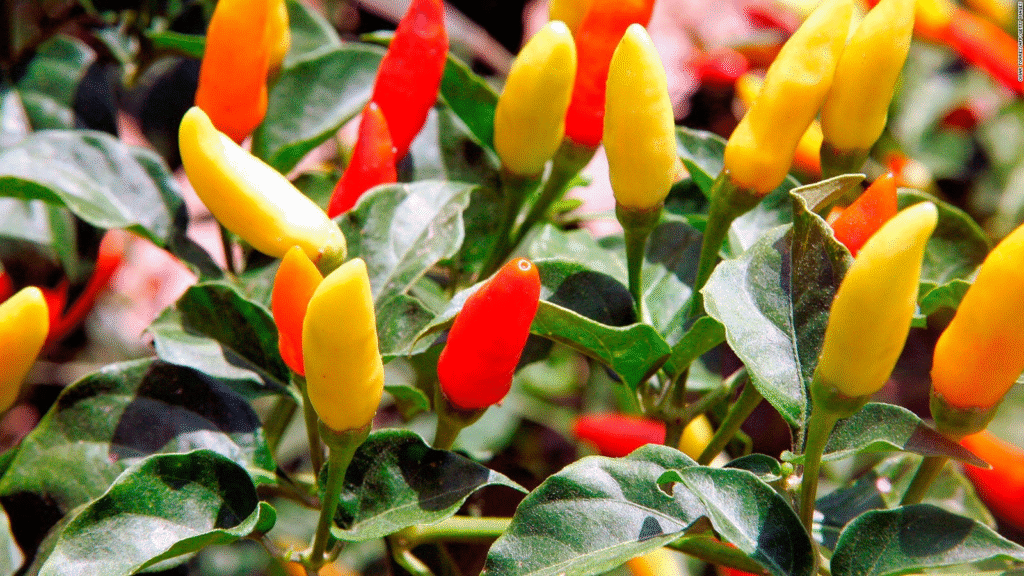
Container-Specific Maintenance
- Watering: Container plants dry out faster than garden plants. Check moisture levels daily, especially during hot weather, and water when the top inch of soil feels dry.
- Fertilizing: Container plants require more frequent feeding. Apply a half-strength liquid fertilizer every 2-3 weeks.
- Location: Place containers where they’ll receive maximum sunlight while being protected from strong winds.
- Overwintering: In zones 7 and below, bring containers indoors before first frost to extend the growing season or keep plants alive for next year.
Growing Tabasco Peppers Indoors
Indoor growing allows year-round production regardless of climate, though yields may be smaller than outdoor cultivation.
Setting Up Your Indoor Growing Space
- Lighting: Tabasco peppers need strong light to produce fruit indoors. Position plants in your brightest south-facing window, or use full-spectrum LED grow lights positioned 6-12 inches above plants for 14-16 hours daily.
- Temperature and humidity: Maintain temperatures between 70-85°F (21-29°C) during the day and no lower than 60°F (15°C) at night. Use a humidity tray or small humidifier to maintain 50-60% humidity.
- Air circulation: Use a small fan to provide gentle air movement, which strengthens stems and reduces disease risk.
Indoor Pollination
Unlike outdoor plants that benefit from insect pollinators, indoor peppers need your help:
- Manual pollination: When flowers open, gently shake the plant to distribute pollen, or use a small paintbrush to transfer pollen between flowers.
- Timing: Pollinate mid-morning when pollen is most receptive, usually between 10 AM and noon.
Common Challenges and Solutions
Tabasco peppers are generally resilient but can face certain challenges:
Pest Management
Common pests include aphids, spider mites, and pepper weevils. The USDA Agricultural Research Service recommends integrated pest management:
- Prevention: Use floating row covers in the garden or sticky traps indoors.
- Monitoring: Check plants regularly, focusing on leaf undersides and new growth.
- Biological controls: Introduce beneficial insects like ladybugs for aphid control.
- Organic treatments: Neem oil or insecticidal soap can address most pest issues without harsh chemicals.
Disease Prevention
Fungal issues like powdery mildew or bacterial leaf spot can affect tabasco peppers. Prevention is key:
- Air circulation: Proper spacing between plants encourages good airflow.
- Watering practices: Water at soil level rather than overhead to keep foliage dry.
- Crop rotation: In garden settings, don’t plant peppers where other nightshades (tomatoes, potatoes, eggplants) grew in the previous two years.
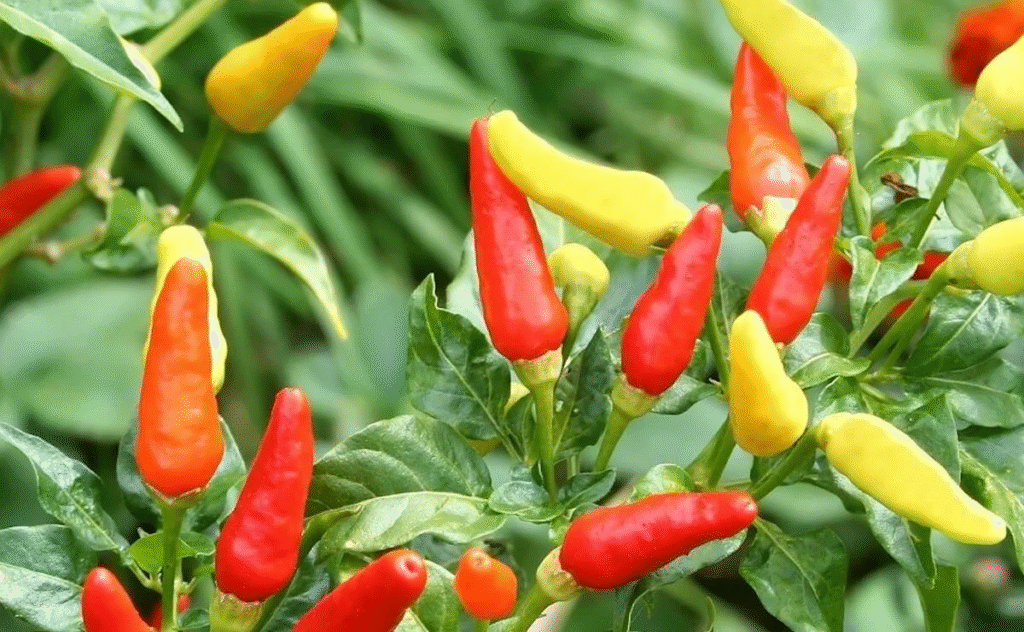
Harvesting and Using Your Tabasco Peppers
With proper care, your tabasco plants should begin producing peppers 80-120 days after transplanting.
When and How to Harvest
- Timing: Peppers can be harvested at any stage but develop their characteristic flavor and heat when fully ripe and red.
- Method: Use clean scissors or pruning shears to cut peppers from the plant rather than pulling, which can damage stems.
- Frequency: Harvest regularly to encourage continued production. Plants can continue producing for several months in favorable conditions.
Extending Your Harvest
- Succession planting: Start new seedlings every 4-6 weeks during spring and early summer for continuous production.
- Overwintering: In cooler regions, bring plants indoors before first frost, trim back by about one-third, and place in a sunny window to continue producing through winter.
Preserving Your Tabasco Pepper Harvest
Tabasco peppers can be preserved in several ways:
- Drying: Thread peppers on string and hang in a well-ventilated area, or use a food dehydrator at 125°F (52°C).
- Freezing: Freeze whole peppers on a tray, then transfer to freezer bags for long-term storage.
- Pickling: Create vinegar-based pickling solutions for refrigerator or canned peppers.
- Homemade hot sauce: Create your own version of the classic tabasco sauce by fermenting peppers with salt before blending with vinegar.
The National Center for Home Food Preservation, a USDA-affiliated resource, provides detailed guidelines for safely preserving peppers.
Conclusion
Growing tabasco peppers offers both gardening satisfaction and culinary rewards. Whether you choose garden beds, containers, or indoor cultivation, these adaptable plants can thrive with proper care. The growing US market for specialty peppers makes them not only a flavorful addition to your garden but potentially a profitable crop for small-scale market gardeners.

